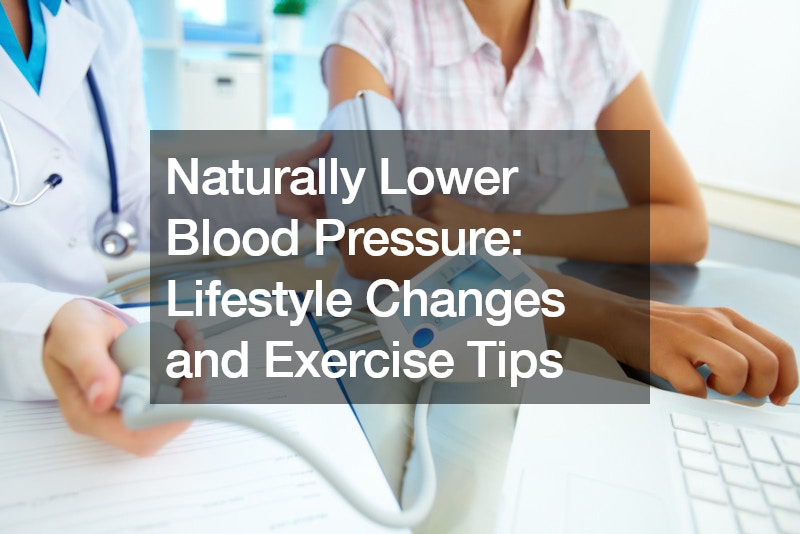High blood pressure, a widespread global health challenge, has become increasingly prevalent due to the adoption of sedentary lifestyles and unhealthy dietary habits in economically developing countries. Addressing this issue requires a comprehensive approach that goes beyond merely reducing blood pressure numbers. In this article, we will explore how lifestyle changes and exercise can play a pivotal role in naturally lowering blood pressure by up to 20 millimeters of mercury.
Understanding the Symptom vs. Underlying Cause:
Elevated blood pressure numbers are often viewed as symptoms of an unhappy body and mind. While medications can effectively lower these numbers, they may not address the underlying processes contributing to high blood pressure.
It’s crucial to recognize that the numbers themselves might be indicative of a more generalized issue. Therefore, a holistic approach that considers lifestyle modifications becomes essential.
Weight Loss as a Key Player:
Excessive weight is a significant contributor to high blood pressure and various cardiovascular diseases. Research suggests that for every kilogram of body weight shed, systolic blood pressure can drop by one millimeter of mercury. Individuals with a body mass index (BMI) over 30 have nearly doubled the risk of developing resistant hypertension. Focusing not just on weight but also on body fat percentage can further enhance the benefits of weight loss in reducing blood pressure.
Dietary Adjustments for a Healthier Lifestyle:
Diet plays a crucial role in managing blood pressure naturally. The average American diet, high in sodium and low in potassium, can contribute to elevated blood pressure. By reducing salt intake to less than 1.5 grams per day and increasing potassium consumption to 3.5 to 5 grams per day, individuals can hope to see a significant reduction in systolic blood pressure readings. Following the DASH (Dietary Approaches to Stop Hypertension) diet, which emphasizes low sodium, high potassium, and other healthy components, can bring about an average reduction of 11 millimeters of mercury.
Additionally, making dietary choices such as replacing animal protein with plant protein, avoiding refined carbohydrates, processed meats, and sugary beverages can contribute to lowering blood pressure by 10 to 11 millimeters of mercury. Introducing magnesium and omega-3 fatty acid supplements further aids in reducing blood pressure, making dietary adjustments a powerful tool in the natural management of hypertension.
Exercise: A Potent Anti-Hypertensive Agent:
Regular physical activity is one of the most effective therapies for chronic diseases, including high blood pressure. Despite its proven benefits, a significant percentage of adults do not meet minimal physical activity recommendations. Engaging in aerobic exercises like brisk walking, cycling, or recreational swimming for a cumulative 150 minutes per week can lead to a reduction of around four to five millimeters of mercury in blood pressure.
It’s essential to start exercising gradually, especially for those who are not meeting the minimal physical activity recommendations. The cumulative amount of exercise done throughout the week is more crucial than the intensity or duration of individual sessions. Even moderate exercise can be extremely effective at lowering blood pressure, with aerobic exercise alone potentially reducing it by about four to five millimeters of mercury.
When blood pressure remains high over time, it can damage the body in several ways and increase the risk of serious health problems such as:
- Heart disease: High blood pressure can cause the heart to work harder than normal, leading to conditions like coronary artery disease, enlarged heart, or heart failure.
- Stroke: The increased pressure can damage blood vessels in the brain.
- Kidney damage: High blood pressure can narrow and thicken the blood vessels in the kidneys, impairing their function over time.
- Vision loss: It can damage the blood vessels in the eyes, leading to vision impairment or blindness.
- Peripheral artery disease: Narrowing of blood vessels in other parts of the body, usually the legs, due to the same processes that occur in the heart.
- Aneurysm: High blood pressure can cause the blood vessels to weaken and bulge, forming an aneurysm, which can burst and cause life-threatening internal bleeding.
- Cognitive decline: Some research suggests that high blood pressure may increase the risk of cognitive decline and dementia in later life.
Conclusion: Empowering Lifestyle Changes for Better Health:
In conclusion, a combination of weight loss, dietary adjustments, and regular exercise can empower individuals to naturally lower their blood pressure by up to 20 millimeters of mercury. This holistic approach addresses not just the symptoms but also the underlying processes contributing to hypertension. Embracing a healthier lifestyle, characterized by mindful dietary choices and regular physical activity, can lead to significant improvements in overall cardiovascular health. By prioritizing these lifestyle changes, individuals can take an active role in managing their blood pressure and reducing the risk of associated health complications.
.







